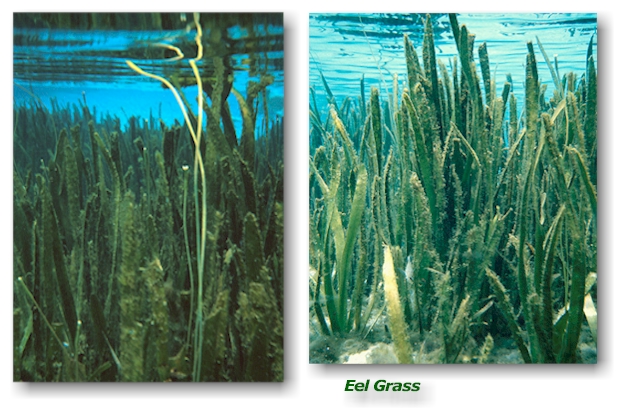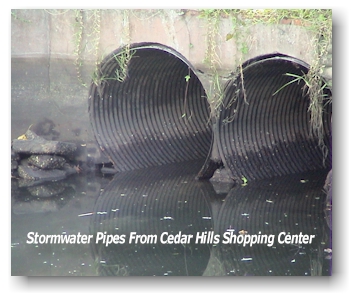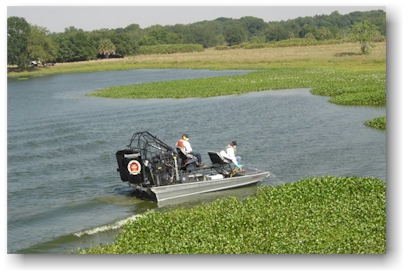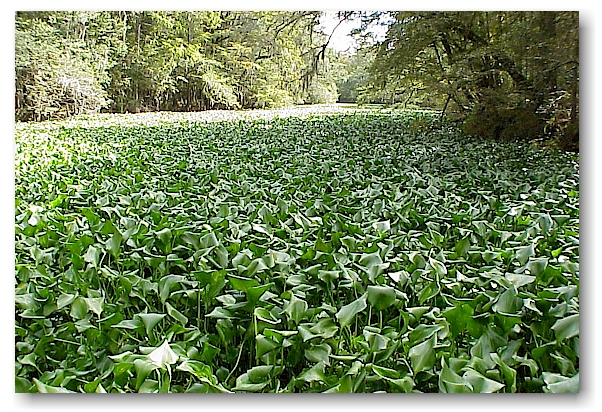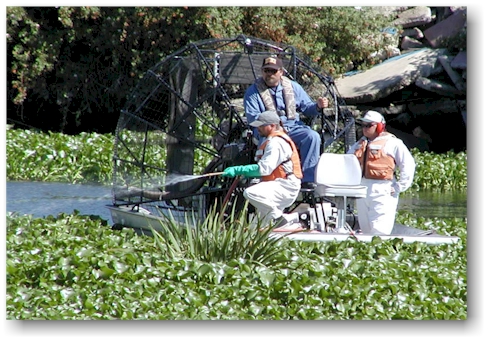|
|
|||
|
|||
|
Dramatic changes in the health of the Cedar River occurred beginning in the mid-sixties as neighborhoods and businesses sprang up around the river basin. Small neighborhood wastewater treatment plants were constructed to serve the new subdivisions that were rapidly being built. These small plants were not properly maintained, quickly fell into disrepair and began releasing raw sewage into the river.
The high nutrient loadings provided a fertile setting for a subsequent massive growth of Water Hyacinths. This exotic floating water plant literally covered the river and was ultimately sprayed with an herbicide to control the explosive growth. The plants quickly died and sank to the bottom of the river leaving a massive amount of rotting and toxic organic matter that subsequently killed much of the submerged (and floating) aquatic vegetation.
There once were vast expanses of Eel Grass along the St Johns to the south of Green Cove Springs where I loved to wade-fish. These areas, once alive with fish, wading birds and Otters, were virtually wiped out after the hyacinths were sprayed.
When the Cedar Hills Shopping Center was constructed, the small natural stream that flowed across the property was paved over and replaced with large underground stormwater pipes. These pipes extended to a small remaining portion of the stream which emptied into the Cedar River right by my childhood home. After school I would go fishing in the stream and recall the smell of the motor oil and other chemicals that washed in during summer rains. I remember that the floating oil would coat my fishing line giving off that same odor of motor oil and changing its color from blue to brown. The aquatic plants that previously thrived soon began to disappear and the stream began to fill with sand and contaminated muck.
An extensive network of stormwater drainage pipes were
installed through out the
Another unwanted side effect was to promote localized
flooding as these drainage pipes often were overloaded with too large a
volume of water. The natural systems that included trees, shrubs, plants and
grasses that formerly captured and soaked up and held the majority of
rainwater were now replaced with the impervious surfaces of shingles and
asphalt. The unnaturally large quantity of “runoff” rainwater to this day
frequently overloads the stormwater conveyance system thus creating flooding
in many areas of the river basin.
The VOLUME of the river has been dramatically reduced by the years of sand and contaminated muck being carried to the river in stormwater runoff. Many areas of the river are filled almost to the surface with silt and sediment. Many docks are not reachable by boat as the water is now too shallow.
I vividly recall one morning in the mid-sixties when a couple of my friends and I went waterskiing. I jumped into the water in the middle of Cedar River just upstream of the Blanding Blvd Bridge. To my surprise, I found myself engulfed in thick liquid ooze beginning a foot or so below the water’s surface and becoming gradually thicker as the water deepened. It felt like I was treading water in a bowl of Campbell’s Cream of Chicken Soup. From that day forward we water-skied downstream in the Ortega River that at the time still remained clear and clean.
During periods of low rainfall the river will appear to begin to recover. As soon as a major rain event occurs, however, the contaminated sediment will be stirred up and will again poison and destroy the aquatic ecosystem.
I share all of these memories to underline the fact that the CONTAMINATED sediment remains to this day on the bottom of virtually all of the tributaries and main stem of the St Johns. This sediment must be REMOVED to fully restore the health of the river.
From an newspaper article published in 2001 Weed control stunting some big fish stories
If there's one thing that will get fishermen talking on the St. Johns, it's the spray used to keep the weeds down. The St. Johns River Water Management District keeps up an active campaign of spraying vegetation to keep the water hyacinths, hydrilla and water lettuce in check.
"When I was a kid," said Curtis Lucas who grew
up on the river in Astor, "You didn't bother to mount 10-pounders. You
mounted 12 pounds. Now they're mounting 8 pounds.
"Everything plummeted," Lucas said, "when they started trying to eradicate the water hyacinth." Bill Flowers, who's been guiding fishermen on the St. Johns for 57 of his 71 years, said that when the water weeds are sprayed, they fall to the bottom, covering the sandy bottom where fish spawn. "We've got 50 years of rotted vegetation on the bottom," Flowers said. "We've got mats of it in the creeks and lakes. In Harry's Creek, the deepest water is 2 feet. The rest is dead vegetation. I'm not a biologist, but if there was any spawning ground there, it's gone."
|
|||
Restore The Rivers * 3088 Country Club Blvd. * Orange Park, FL 32073 Phone 904-327-1202 *
Info@restoretherivers.com * www.restoretherivers.com
Copyright © 2009 Restore The Rivers All Rights Reserved
|

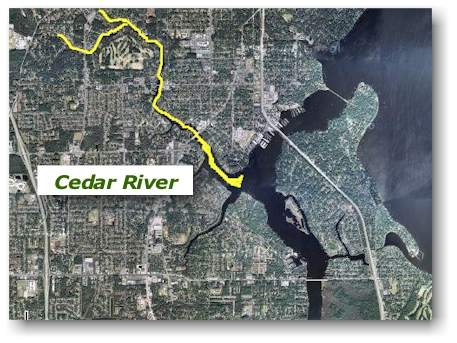 The Cedar River
is an impaired urban tributary that flows into the
Ortega River in Jacksonville's Riverside and Ortega neighborhoods and
would be an ideal candidate for the envisioned River Restoration Plan.
The Cedar River
is an impaired urban tributary that flows into the
Ortega River in Jacksonville's Riverside and Ortega neighborhoods and
would be an ideal candidate for the envisioned River Restoration Plan. 